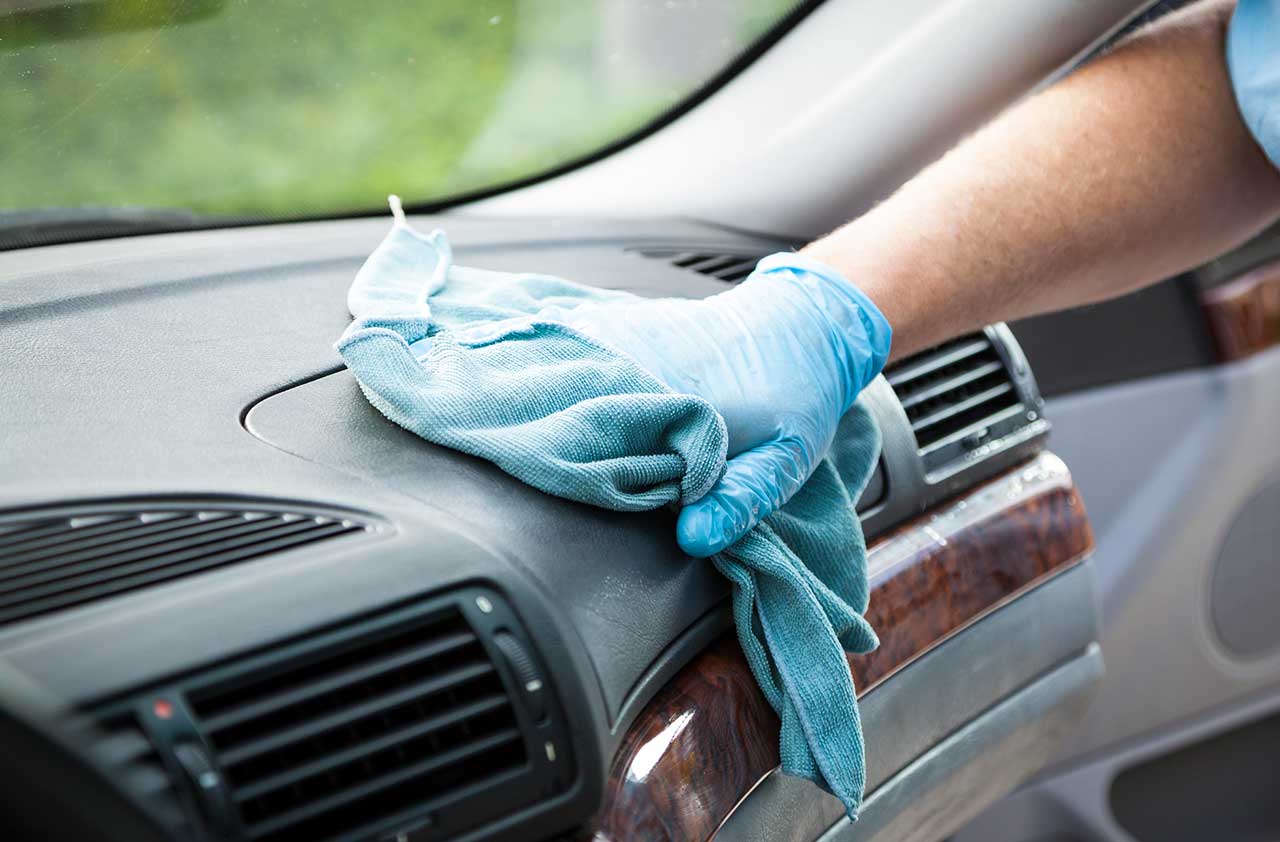How to Clean and Maintain Your Car in the Coronavirus Era
First things first: Let’s disinfect that small, enclosed space.


You know what preceded the huge-selling Toyota Camry in the U.S. market? The Toyota Corona, last sold here in 1982. But we digress. The reach of COVID-19 extends to our beloved motor vehicles as well, since they are places that humans (some of whom may be infected) visit. So the first order of business is doing what you can to reduce the possibility of your car being contaminated. But the giant social disruption of coronavirus may have other automotive impacts as well.
Lysol wipes and their generic equivalents should be fine, as are alcohol-based products (like hand sanitizers). These, of course, are in high demand. If you’re concerned about dipping into your hoard, remember that the CDC notes that the best approach is to take two steps: clean, then disinfect. So, you could simply use a gentle household cleaner, an existing car-specific cleaner, or even just soap and water (in a cloth) to first clean the hard surfaces. Since there are electronics involved, keep the amount of liquid to a minimum, and I suggest using a microfiber cloth to get the most dirt off with the fewest scratches. Then you can go back and do a quick wipe down with a germ-killing product. Don’t forget the seat-belt buckles.
Since CDC guidelines suggest fabrics are unlikely to be a germ vector, we see no need to mess with cloth upholstery or carpet. Leather is a harder call, particularly if it’s on your steering wheel. We’d suggest that for every few times you use something virucidal on a leather-wrapped steering wheel, you also consider a wipe with a leather-care product that contains some moisturizers, for the leather’s sake, not yours.

Sign up for Kiplinger’s Free E-Newsletters
Profit and prosper with the best of expert advice on investing, taxes, retirement, personal finance and more - straight to your e-mail.
Profit and prosper with the best of expert advice - straight to your e-mail.
When it comes to cleaning someone else’s car (say, you’re a ride-share passenger), use wipes in a bag on any surfaces you touch, and sanitize afterward. And, if your driver hasn’t done so already, put your windows down.
Car in quarantine?
Quarantines and the like may affect driving patterns. Caring for an elderly relative or friend who’s not supposed to go out may also mean caring for their vehicle, for example. A few tips about that:
- Machinery likes to be exercised. The best way to keep up a car is to drive it, at least once every two weeks, in a way that it gets fully warmed up — at least 10 miles, preferably at highway speeds.
- Just turning a car on and idling it for a while doesn’t count; in fact, it’s probably a negative. Drive it.
- Gas with ethanol in it goes bad quickly, in a matter of a few months. If you don’t think you’ll make it through a tankful by the time this is all over, add fuel stabilizer, like you would to a lawnmower or snowblower.
Car on overtime
You might also be experiencing the inverse: Because you’ve ditched public transportation or you have a kid unexpectedly home from college, your vehicles are racking up miles. If that means you need to go past a service interval because your repair shop or dealership has shut down due to coronavirus, don’t sweat it too much.
“Those who may be concerned about driving past their normal maintenance schedule can take heart in the knowledge that a well-maintained vehicle, just as a healthy body, can weather a minor disruption in regular maintenance,” says Tony Molla, vice president, industry relations for the Automotive Service Association.
If you’re close to or over an interval, and your car has a conventional dipstick, you could add more new oil up to the indicated maximum as a way to spruce up your oil a bit with fresh detergents and protectants. But don’t overfill, which can pose serious engine hazards.
Get Kiplinger Today newsletter — free
Profit and prosper with the best of Kiplinger's advice on investing, taxes, retirement, personal finance and much more. Delivered daily. Enter your email in the box and click Sign Me Up.

In his former role as Senior Online Editor, David edited and wrote a wide range of content for Kiplinger.com. With more than 20 years of experience with Kiplinger, David worked on numerous Kiplinger publications, including The Kiplinger Letter and Kiplinger’s Personal Finance magazine. He co-hosted Your Money's Worth, Kiplinger's podcast and helped develop the Economic Forecasts feature.